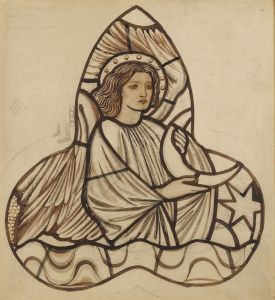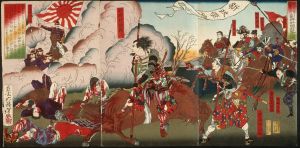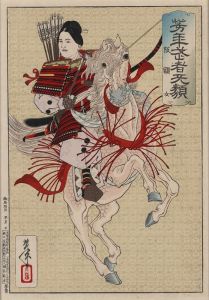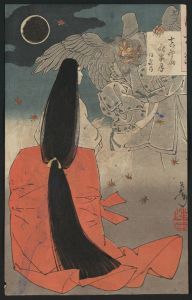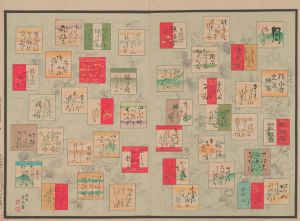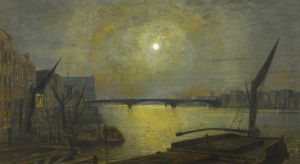
Moon of the Lonely House
A hand-painted replica of Tsukioka Yoshitoshi’s masterpiece Moon of the Lonely House, meticulously crafted by professional artists to capture the true essence of the original. Each piece is created with museum-quality canvas and rare mineral pigments, carefully painted by experienced artists with delicate brushstrokes and rich, layered colors to perfectly recreate the texture of the original artwork. Unlike machine-printed reproductions, this hand-painted version brings the painting to life, infused with the artist’s emotions and skill in every stroke. Whether for personal collection or home decoration, it instantly elevates the artistic atmosphere of any space.
"Moon of the Lonely House" is a woodblock print by the renowned Japanese artist Tsukioka Yoshitoshi, created in 1886. Yoshitoshi, who lived from 1839 to 1892, is often considered the last great master of the ukiyo-e genre of woodblock printing and painting. His works are known for their dramatic intensity, innovative compositions, and vivid use of color.
This particular print is part of Yoshitoshi's acclaimed series "One Hundred Aspects of the Moon" (Tsuki hyakushi), which he worked on from 1885 to 1892. The series consists of 100 woodblock prints, each depicting a scene from Japanese and Chinese history, literature, folklore, or mythology, all unified by the common theme of the moon.
"Moon of the Lonely House" (also known as "The Lonely House at Adachi Moor") is one of the more haunting and evocative prints in the series. It portrays the eerie and tragic story of the witch, Adachigahara, also known as the Demon of Adachigahara. According to legend, Adachigahara was an old woman who lived in a lonely house on the moor and lured travelers to their doom.
In the print, Yoshitoshi masterfully captures the sinister atmosphere of the scene. The central figure is the old woman, depicted with a gaunt, almost skeletal appearance, her face twisted in a malevolent expression. She is shown in the act of spinning thread, a traditional symbol of fate and destiny, which adds to the ominous mood of the piece. The background features a desolate landscape under a full moon, which casts an eerie light over the entire scene, enhancing the sense of isolation and foreboding.
Yoshitoshi's use of color and composition in "Moon of the Lonely House" is particularly noteworthy. The stark contrast between the dark, shadowy figure of the old woman and the pale, ghostly light of the moon creates a powerful visual impact. The detailed rendering of the woman's face and hands, combined with the flowing lines of her clothing and the surrounding landscape, demonstrate Yoshitoshi's exceptional skill as an artist.
The print not only reflects Yoshitoshi's technical prowess but also his deep understanding of human emotion and psychological tension. Through his depiction of the witch and the moonlit landscape, Yoshitoshi conveys a sense of dread and melancholy that resonates with viewers, making "Moon of the Lonely House" a compelling and memorable work of art.
"Moon of the Lonely House" is widely regarded as one of Yoshitoshi's masterpieces and continues to be celebrated for its artistic and narrative depth. It remains a significant example of late 19th-century Japanese woodblock printing and a testament to Yoshitoshi's enduring legacy in the world of art.





